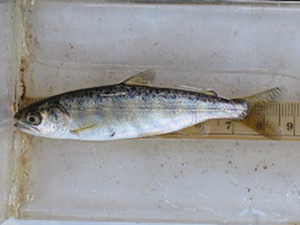Idaho Fish Report
Klamath River Report
by OR Department of Fish & Wildlife Staff
1-14-2021
Website
Keno Dam to J.C Boyle Reservoir
This section of the river opened Oct. 1. Water temperatures are very cold (33 F) and flows (603 cfs) are good for fishing. Public access is difficult but you can drive a horrendous road to immediately below Keno Dam. All other sites require a significant hike to the river.
Redband trout this time of year focus on eating forage fish that include fat head minnow, marbled sculpin, tui chub and blue chub. Therefore, flies and lures that mimic minnows will work well. Water velocities are very fast therefore flies and lures will need some weight to get down to the fish. The water is always slightly off color so this is not a place for dry flies.
This section of the river is very challenging fishing with white water and treacherous wading. The river is loaded with boulders and drop offs that eat fishing gear. ODFW recommends a wading staff, wading belt, excellent wading boots with studs, and maybe even a helmet and shin guards!
J.C. Boyle Powerhouse to State Line with California
Open all year. This section of the river provides the best fishing in the Klamath Basin currently. Flows remain very fishable until around 3 p.m. on most days.
Best fishing is when flows are less than 900 cfs. Flow estimates are available and you can check them at PacifiCorp Weekly Flow Estimates. Fishing can be excellent this time of year if flows are fishable.
Large attractor flies such and wooly buggers, stimulators, and rubber leg stoneflies under a strike indicator work best this time of year. Numerous caddisflies are hatching this time of year making for good dry fly fishing. Skating caddisflies on the surface can be productive. Crayfish imitations are also productive. Olive and black wooly buggers almost always work well. Black spinners and Panther Martins can also work.
Below the JC Boyle Powerhouse the redband/rainbow trout get slightly larger than the aforementioned reach and average 12 inches but rarely exceed 16 inches. Currently, most redband caught are in the 10- to 14-inch range.

